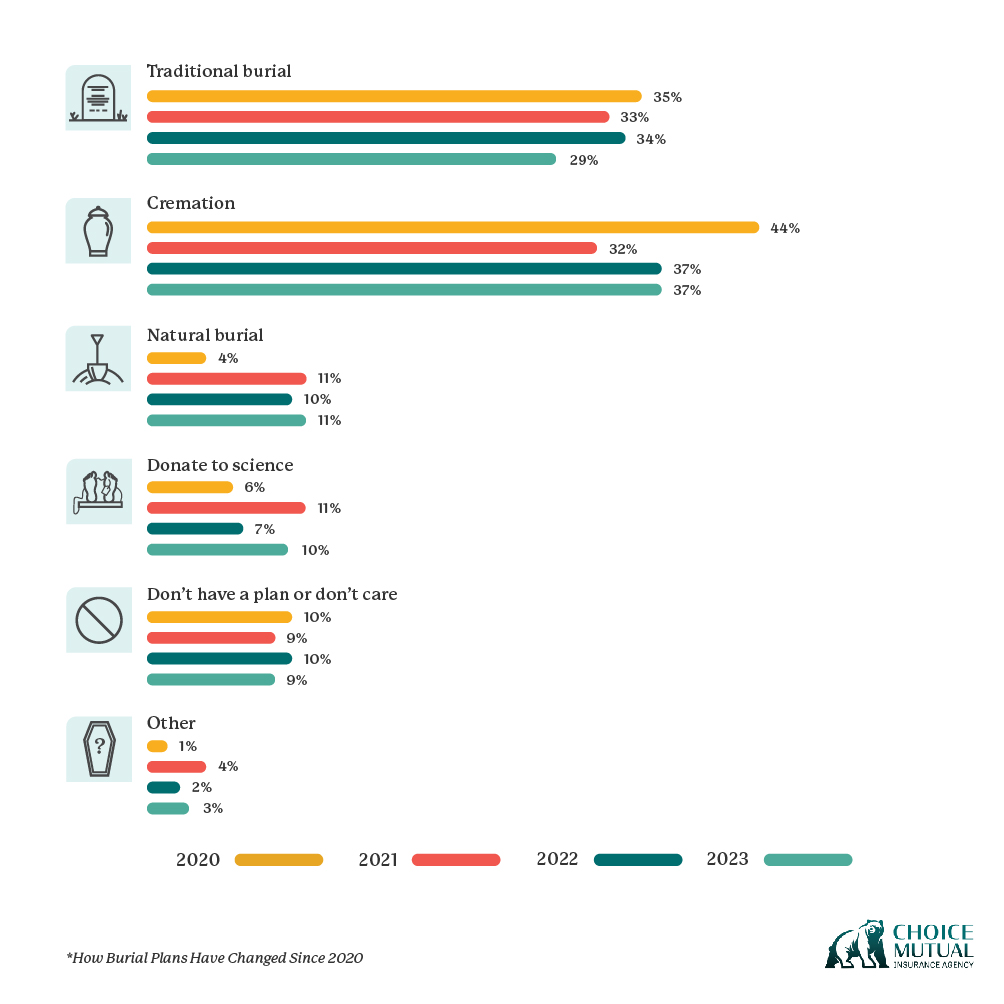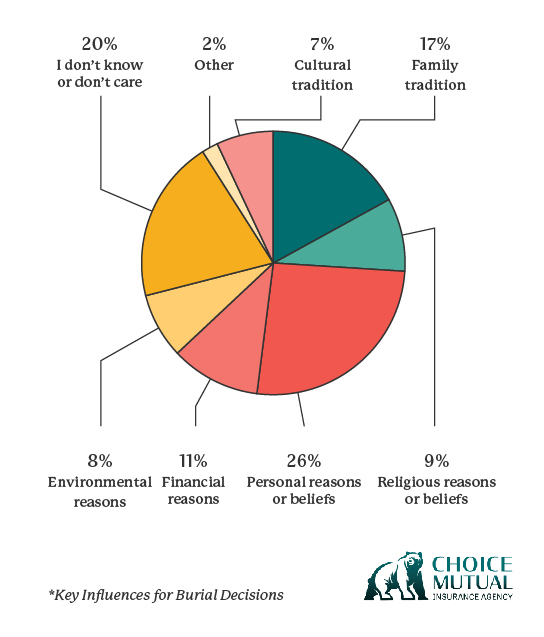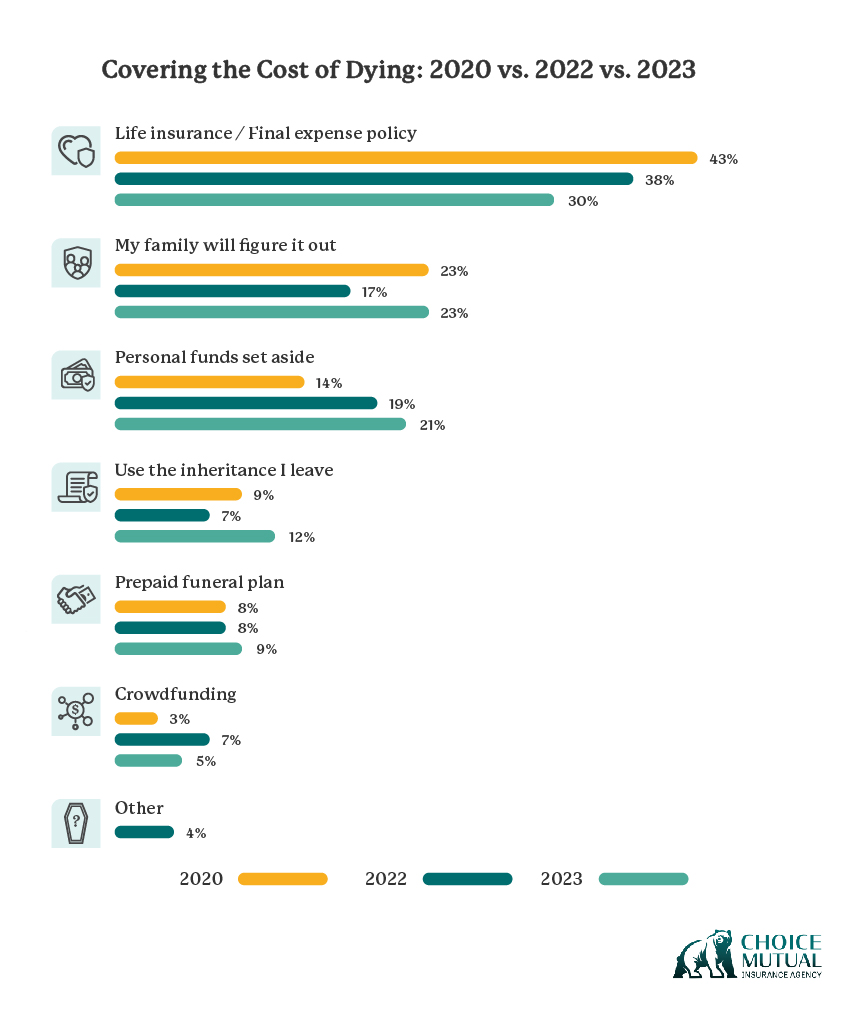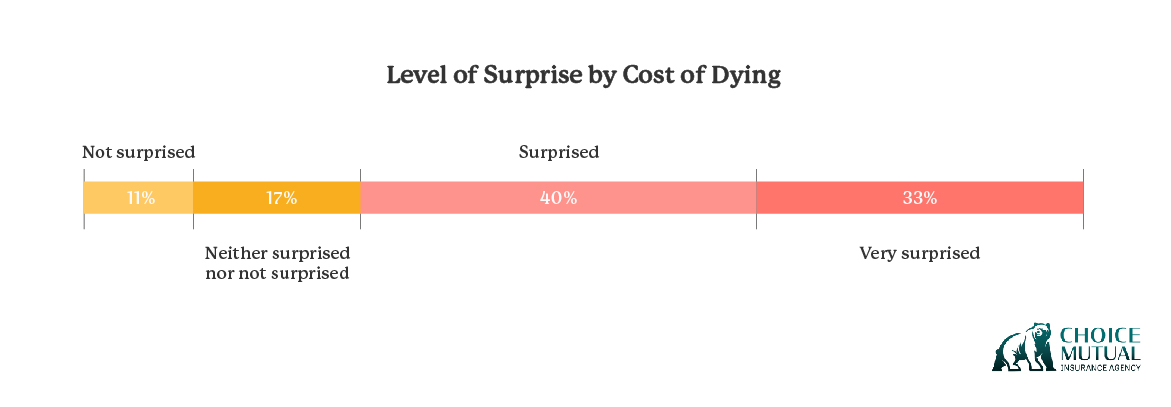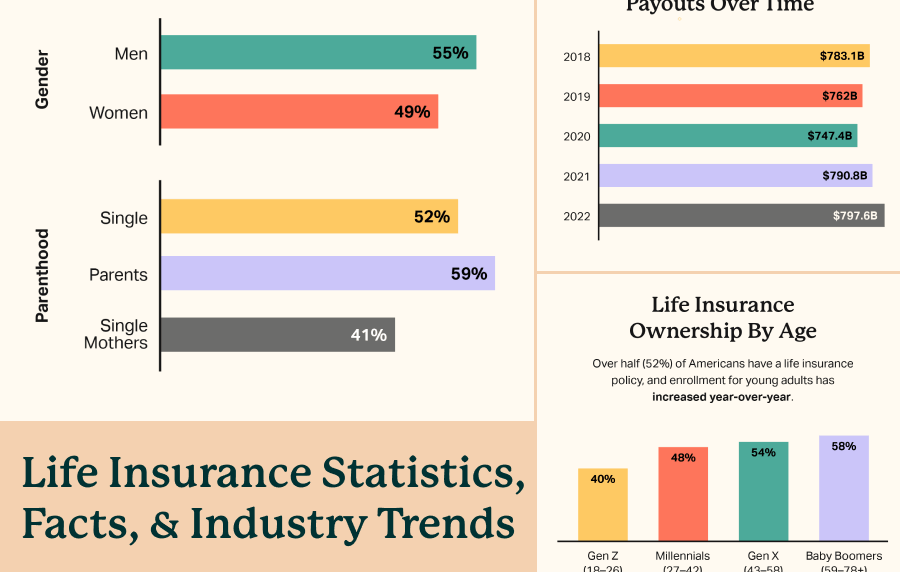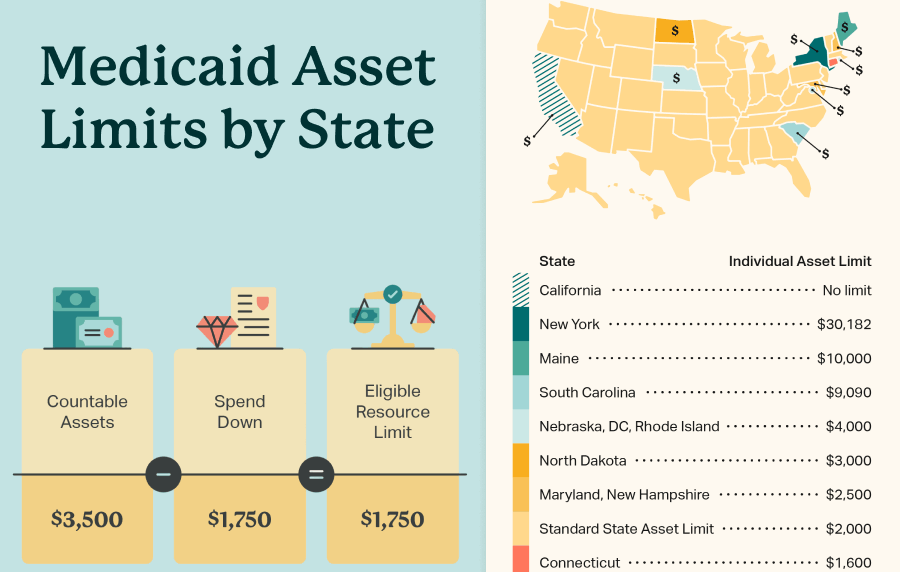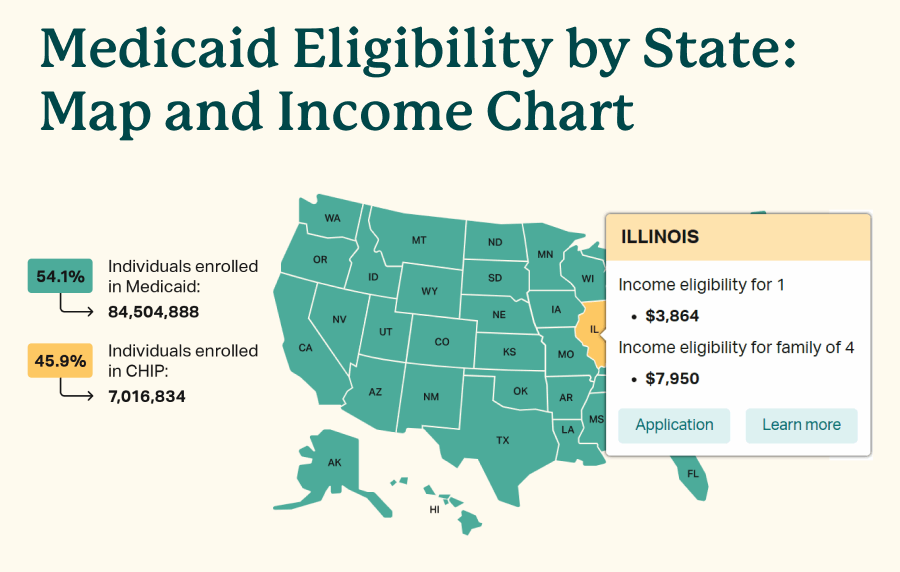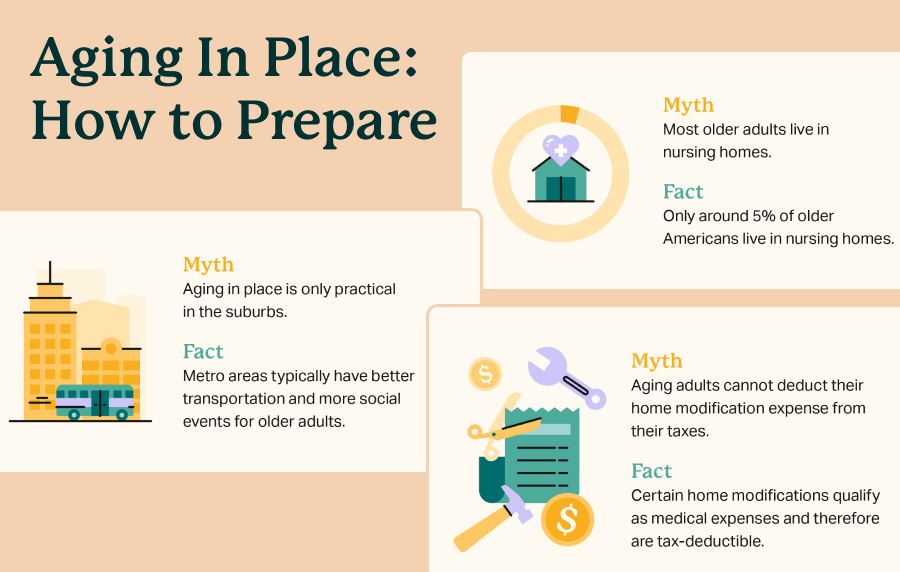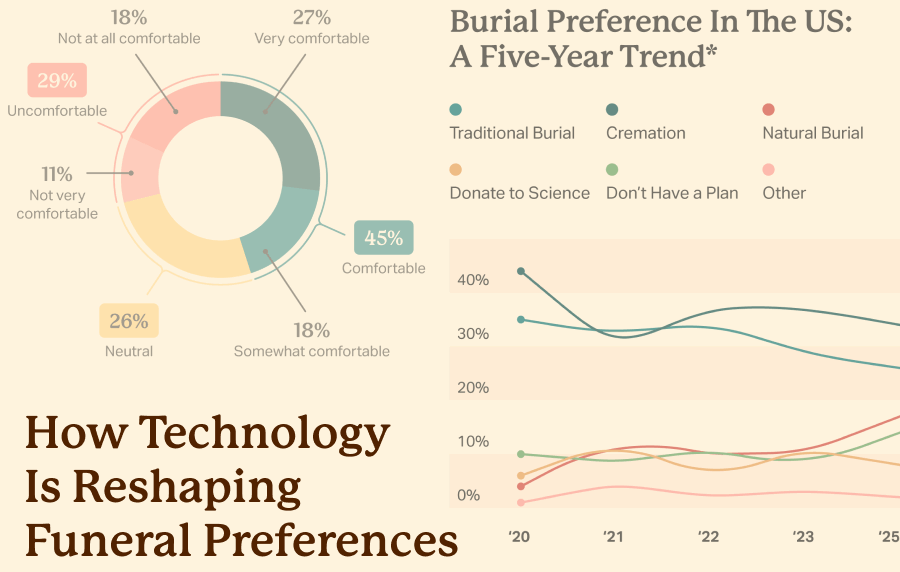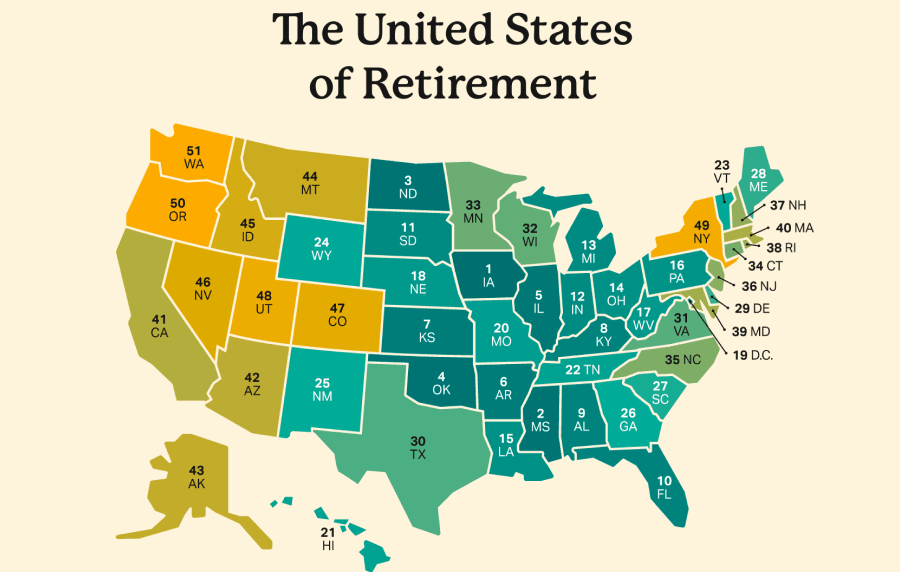In our 2020 report, we investigated the avant-garde ways that people may choose to be memorialized, like turning their ashes into a diamond or rocketing their remains into space. In our 2021 report, we determined that 37% of Americans claimed the COVID-19 pandemic impacted their burial decisions. Last year, the 2022 report discovered how Americans consider more sustainable burial options like natural burials or body composting.
This year, many Americans are navigating inflation and increased cost of living. A Bankrate survey from December last year found that 11% of U.S. adults believed their finances would worsen significantly in 2023. Additionally, Fortune reported that 52% of Americans’ biggest worry is that the rising cost of living will affect their ability to pay their bills and save for the future.
With that in mind, we surveyed another 1,500 U.S. adults for 2023 to determine how their current finances and the state of inflation may impact future end-of-life decisions. Continue reading to see what else we discovered in our 2023 survey.
Burial Preferences In The USA: 2020 – 2023
Like in previous years, most Americans are choosing cremation (37%)—this is a continued shift away from traditional burial that the industry has witnessed over the past several decades.
Compared to 2020, 7% more Americans choose natural burial (up from 4% to 11%). This increase is likely due to greater awareness of sustainable burial alternatives and their increased availability nationwide.
Additionally, there is a 4% increase in those opting to donate their remains to science. In that regard, since 2020, plans to be cremated or traditionally buried are down by 6% and 7%, respectively, suggesting that Americans are increasingly willing to consider alternative burial methods.
Key reasons for burial decisions
Similar to last year, the majority of Americans (26%) determine their end-of-life plans based on personal reasons, followed by family tradition (17%) and financial reasons (11%). Compared to 2021, there was a 3% increase in those who base their burial decisions on economic factors.
Burial decisions if money were not a factor
Like our 2022 results, 68% of respondents said they would change their burial plans if money were not a factor. Of those who would change their burial plans, nearly 1 in 5 would opt for a traditional burial. According to the latest data from the National Funeral Directors Association (NFDA), the median cost of a funeral and burial in the United States in 2021 was $7,848.
Alternative Funeral & Burial Options To Save Money
Bloomberg recently reported on the U.S. funeral industry, stating that the U.S. market is worth an estimated $20 billion annually. Furthermore, “As the baby boomer generation passes, that number will grow. In half the states in 2022, for instance, there were more people dying than being born. The business of death care is changing with this generational shift.”
There are many ways that Americans can save on their funeral expenses, and recent trends show that service providers will increasingly need to offer alternative options to meet these demands.
We found that nearly 50% of respondents are concerned about the cost of their funeral/burial plans. With that in mind, by educating yourself on all available options, you can experience significant savings on your funeral expenses.
Direct burial or cremation
Direct or immediate burial is the process of burying remains shortly after death, without embalming, and a viewing, visitation, or wake before the burial. Similarly, direct cremation involves transporting remains directly to the crematory shortly after death and returning ashes to the deceased’s loved ones without a service. In either case, loved ones can plan a separate memorial service at their own cost.
On average direct burials cost $2,597, not including the cost of a casket. The median price of a metal casket, according to the NFDA, is $2,500. The average cost of a direct cremation is $2,395 if the family supplies the container. Urns cost an average of $295.
Regarding Americans’ understanding of these options, only 49% of respondents knew the difference between a direct burial/cremation and traditional burial/cremation. Once informed on the definition of immediate burials/cremations, 58% of respondents said they would consider a direct burial/cremation to save money on their burial/funeral plans.
When analyzing the business of death, Bloomberg reported that embalming is not the global norm and is only practiced in large numbers in the U.S. and Canada. In foregoing embalming and visitation ceremonies, Americans can experience significant savings on their funeral costs. The Washington Post cited that families will save an average of $5,000 to $6,000 by selecting an immediate burial compared with a traditional burial.
According to Forbes, direct cremation is the cheapest and most common cremation method in the U.S. This year, BBC reported on U.K. burial trends; “Direct cremations grew in popularity during the coronavirus outbreak, but the trend shows no signs of slowing. Funeral directors say there has been increased demand for basic services due to the cost of living crisis.”
Rental coffins
End-of-life planning company, Everplans, defines a rental casket as “a casket that has a removable interior. The body is placed in a simple wooden box, and the box is placed inside the casket, giving the appearance that the body is actually in the casket.” According to Everplans, the body never touches the casket, and the wooden box removes easily after the service. The remains can then be buried in a simple wooden box, and the funeral home can reuse the rental casket.
Aside from saving an average of $1,100 by using a rental casket, the option is more sustainable than purchasing a casket because the funeral home can reuse the rentals several times. Burial with a simple container requires much fewer materials.
43% of respondents would consider a rental coffin for their memorial service to save money on their end-of-life expenses.
DIY funerals
52% of Americans would consider a “DIY funeral,” also referred to as “family-directed after-death care,” “community-led care for the dead,” or a “home funeral,” to save money on their end-of-life expenses.
A DIY funeral empowers loved ones to explore more affordable, meaningful, or eco-friendly memorials for those who have passed. Chris Taptak, the founder of aquamation provider Pisces, commented on the growing popularity of DIY funerals:
“I myself have helped an increasing number of families opting to perform home funerals – where the decedent is kept at home, typically on dry ice, and family members pay visits to their loved one last time. I love this idea – it reduces costs for the family, keeps the decedent present for viewing 24/7 by close friends and family (again, at no cost), and feels quite intimate (as opposed to a funeral home). We’ve also seen many families opt for celebrations of life conducted after a cremation or aquamation, typically with the ashes of the decedent. Opting to perform a ceremony after the cremation or aquamation has occurred allows the family more time to make meaningful arrangements in a less emotional state… There has also been a notable increase in out-of-the-box funeral services/celebrations – for instance, a boat party, renting out a movie theatre, poetry readings at home, etc.”
Purchase a casket online
Purchasing a casket online is another method that people may choose to reduce burial costs. Undercover shoppers revealed that for an oak casket, the average price quoted by area funeral homes was $3,782; the shoppers found a comparable model online for $1,200. By law, funeral homes must use the separately purchased casket if requested.
Request a general price list
When discussing services with a funeral home provider, asking for a General Price List (GPL) is advisable. The GPL is an itemized list containing the price of every good and service the funeral home provides. Consumers are given these GPLs to keep and calculate the total cost of their planned funeral. In doing so, opting out of specific offerings to reduce total cost may be possible.
Apply for funeral expense benefits
According to the Washington Post, many Americans may be eligible for funeral expense payment support. These benefits are not automatically provided and must be applied for.
They cited two available benefits:
- A lump-sum Social Security death benefit of $255 is available to a surviving eligible spouse or dependent child (under 18).
- Anyone with COVID-related funeral expenses may be eligible for reimbursement of up to $9,000. You cannot apply for funeral reimbursement money online; you must call FEMA’s COVID-19 funeral assistance helpline at 844-684-6333 (TTY: 800-462-7585). There is no deadline for requesting this benefit.
How Americans Plan For Their Cost of Dying
In 2020, 2022, and this year, we asked respondents to clarify how they plan to pay for their funeral/burial expenses. The most popular plan, with 30% of respondents selecting the option, is funeral insurance (also commonly referred to as final expense insurance).
Funeral insurance is a small face-value whole-life policy that covers your burial and other end-of-life costs. When you die, the life insurance company that issued the coverage will provide a quick cash payout (tax-free) to your loved ones or funeral home, providing family members the money to fulfill the deceased’s last wishes.
This year, nearly 1 in 4 Americans (23%) claim that their family will figure out how to cover the costs of their burial and funeral. This percentage increased by 6% (from 17% to 23%) since our 2022 survey.
With that in mind, we also asked respondents if they have ever been burdened by the costs of a loved one(s)’ funeral expenses, and 39% answered “yes.” This experience is not exclusive to the U.S. Yahoo cited a recent study in the U.K. that reported 43% of adults had gone into debt or experienced financial hardship to pay for a funeral.
Aside from funeral insurance and family funding, the third most popular plan for funeral expense payment is personal savings set aside for the burial/funeral (21%). Only 9% of Americans opt for a pre-paid funeral plan.
Americans’ Knowledge of Standard Funeral Costs
The NFDA quoted the median cost of a viewing plus burial in 2021 to be $7,848. We asked respondents what they thought the average burial and funeral cost in the United States was. 41% of respondents underestimated the cost, answering $7,000 or less.
Americans surprised by funeral expenses
36% of respondents have been involved in planning a funeral in the past calendar year. Of that 36%, 73% were surprised by the costs.
Chris Taptak remarked on this phenomenon, noting, “Many funeral homes do not disclose pricing online – while not federally required (New York Times reported on how this law may change), this is required in some states, like California. Many funeral homes mislead families with low quotes around services, and once services are rendered, leave them with a bill of services that was much more expensive than originally quoted. The funeral industry is notoriously opaque and predatory, and many families do not know what questions to ask around pricing.”
Planning Ahead
As the cost of living in America increases, so does the cost of dying.
No matter which burial method you choose, educating yourself on the associated expenses ahead of time will mitigate unexpected costs. Learn more about funeral expenses and end-of-life preparation.
Methodology
We surveyed 1,500 people in the United States about their burial preferences. We asked how they plan on being buried, what influences those decisions, which cost-saving options they would consider, how they plan to cover funeral expenses, and how global events have impacted their memorial plans.
Here is a detailed overview of the survey participants:
Age:
- 18 – 24: 14%
- 25 – 34: 23%
- 35 – 44: 25%
- 45 – 54: 18%
- >54: 20%
Gender:
- Male: 42%
- Female: 58%
Refer to the 2024 survey results for the most up-to-date version of the annual funeral preferences survey.
- Nationally licensed life insurance agent with over 15 years of experience
- Personal annual production that puts him in the top .001% out of all life insurance agents in the nation.
Anthony Martin is a nationally licensed insurance expert with over 15 years of experience and has personally served over 10,000 clients with their life insurance needs. He frequently authors entrepreneurial and life insurance content for Forbes, Inc.com, Newsweek, Kiplinger, and Entreprenuer.com. Anthony has been consulted as an expert life insurance source for dozens of high-profile websites such as Forbes, Bankrate, Reuters, Fox Business, CNBC, Investopedia, Insurance.com, Yahoo Finance, and many more.
- Nationally licensed life insurance agent with over 19 years of experience
- Best selling Amazon author.
Jeff Root is a nationally licensed life insurance expert with over 19 years of experience. He has personally helped over 3000 clients with their life insurance needs. Jeff is a best-selling Amazon author and the managing partner of a highly successful insurance brokerage that manages over 2,500 licensed insurance agents across the USA. He has been a featured life insurance source for prestigious websites such as Forbes, Bloomberg, MarketWatch, Nerdwallet, and many more.
- Nationally licensed life insurance agent with over 14 years of experience
- Best selling Amazon author of five insurance sales books.
David Duford is a nationally licensed insurance expert with over 14 years of experience. He has personally helped more than 15,000 clients buy life insurance. David has been featured as an expert source for highly authoritative publications such as A.M. Best and Insurancenewsnet. He also runs one of the largest Youtube channels to help aspiring insurance agents serve their clients better.
- Nationally licensed life insurance agent with over 19 years of experience
- Best selling Amazon author.
Jeff Root is a nationally licensed life insurance expert with over 19 years of experience. He has personally helped over 3000 clients with their life insurance needs. Jeff is a best-selling Amazon author and the managing partner of a highly successful insurance brokerage that manages over 2,500 licensed insurance agents across the USA. He has been a featured life insurance source for prestigious websites such as Forbes, Bloomberg, MarketWatch, Nerdwallet, and many more.
- Nationally licensed life insurance agent with over 14 years of experience
- Best selling Amazon author of five insurance sales books.
David Duford is a nationally licensed insurance expert with over 14 years of experience. He has personally helped more than 15,000 clients buy life insurance. David has been featured as an expert source for highly authoritative publications such as A.M. Best and Insurancenewsnet. He also runs one of the largest Youtube channels to help aspiring insurance agents serve their clients better.
Choice Mutual often cites third-party websites to provide context and verification for specific claims made in our work. We only link to authoritative websites that provide accurate information. You can learn more about our editorial standards, which guide our mission of delivering factual and impartial content.
-
Bankrate survey from December last year. https://www.bankrate.com/personal-finance/personal-finances-outlook-survey/#outlook
-
52% of Americans' biggest worry is that the rising cost of living will affect their ability to pay their bills. https://fortune.com/2022/12/30/americans-overspent-less-but-2023-inflation-recession-still-a-threat/
-
latest data from the National Funeral Directors Association (NFDA. https://nfda.org/news/statistics
-
Bloomberg recently reported on the U.S. funeral industry. https://www.bloomberg.com/news/articles/2023-04-11/how-much-do-funerals-cost-burials-just-one-part-of-expenses?leadSource=uverify%20wall
-
according to the NFDA. https://nfda.org/news/media-center/nfda-news-releases/id/6182/2021-nfda-general-price-list-study-shows-funeral-costs-not-rising-as-fast-as-rate-of-inflation
-
Bloomberg reported that embalming is not the global norm. https://www.bloomberg.com/news/articles/2023-04-11/how-much-do-funerals-cost-burials-just-one-part-of-expenses?leadSource=uverify%20wall
-
families will save an average of $5,000 to $6,000 by selecting an immediate burial compared with a traditional burial. https://www.washingtonpost.com/home/2022/09/29/tips-saving-funeral-costs/
-
direct cremation is the cheapest and most common cremation method in the U.S. https://www.forbes.com/advisor/personal-finance/cost-of-cremation/
-
BBC reported on U.K. burial trends. https://www.bbc.com/news/uk-england-norfolk-64376094
-
rental casket as "a casket that has a removable interior. https://www.everplans.com/articles/save-money-on-a-funeral-with-a-rental-casket
-
rental casket. https://funeralcircle.com/rental-caskets/
-
Pisces. https://www.withpisces.com/
-
Undercover shoppers. https://www.washingtonpost.com/home/2022/09/29/tips-saving-funeral-costs/
-
many Americans may be eligible for funeral expense payment support. https://www.washingtonpost.com/home/2022/09/29/tips-saving-funeral-costs/
-
43% of adults had gone into debt. https://news.yahoo.com/two-fifths-gone-debt-pay-082322024.html?guccounter=1&guce_referrer=aHR0cHM6Ly93b2xmLmNtLmJsb29tYmVyZy5jb20v&guce_referrer_sig=AQAAACZmiqDyJg9yB1tIjaqhmcgTVI1r1l4waRVeYddsu8gDJ7dx_qppcns8_wPSjofgk0fmc3DnZaopkW5NKuTORNp4HnWsRaDFMbYQ8lAKuvVFjgh3pFhRy9Uqcz-n6uAr_Dq2QocEjDxXKJ1LX8uoYL0miuQdEV75K2UDY22a9y1k#:~:text=Forty%2Dthree%20per%20cent%20of,towards%20a%20loved%20ones
-
NFDA quoted the median cost of a viewing plus burial in 2021 to be $7,848. https://nfda.org/news/statistics
-
New York Times reported on how this law may change. https://www.nytimes.com/2023/04/14/your-money/funeral-homes-prices-online.html



